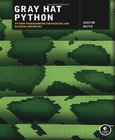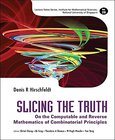Comet and Reverse Ajax
The Next-Generation Ajax 2.0

Book Details:
| Publisher: | Apress |
| Series: | Apress |
| Author: | Phil McCarthy |
| Edition: | 1 |
| ISBN-10: | 1590599985 |
| ISBN-13: | 9781590599983 |
| Pages: | 100 |
| Published: | Oct 13 2008 |
| Posted: | Nov 19 2014 |
| Language: | English |
| Book format: | |
| Book size: | 12.37 MB |
Book Description:
One of the most basic laws of a web application is that the client, not the server, must initiate any communication between the two. There are a number of commonuse cases where, ideally, the server would like to talk to the clientdashboards and monitoring apps, chat rooms and other collaborations, and progress reports on longrunning processes. Comet (a.k.a. Reverse Ajax) provides a mechanism for enabling this. Comet is moderately complex to implement. But this practical, handson book gets you going. In Part 1 of this book, we start by examining the use cases, and look at the simple alternatives to Comet and how far they can satisfy your needs. In some situations, though, only Comet will do. In Part 2, we demonstrate how to set up and run a Cometbased application. With this book, be a part of the next generation, Ajax 2.0. What youll learn Find out what Comet is and the trouble with HTTP See how to achieve push, polling, piggybacking, raw sockets, and more Explore some common use cases and a worked example on "magnetic poetry." Understand what some issues and techniques are including the tworequest limit, pubsub and server architectures, and continuations vs. native Comet Use implementations of Comet, including Cometd/Bayeaux, Reverse Ajax in DWR, and more Work through the final example using DWR Framework Who this book is for This firstPress title is for Ajax developers who are intrigued by Comet/Reverse Ajax, key to the next generation Ajax 2.0.
Download Link:
Related Books:
Gray Hat Python
Python Programming for Hackers and Reverse Engineers
Python is fast becoming the programming language of choice for hackers, reverse engineers, and software testers because it's easy to write quickly, and it has the low-level support and libraries that make hackers happy. But until now, there has been no real manual on how to use Python for a variety of hacking tasks. You had to dig through forum posts and man pages, endlessly tweaking your own code to get everything working. Not anymore.Gray Hat Python explains the concepts behind hacking tools and techniques like debuggers, trojans, fuzzers, and emulators. But author Justin Seitz goes beyond theory, showing you how to harness existing Python-based security tools - and how to build your own when the pre-built ones won't cut it.You'll learn how to: Aut...
Covert Java
Techniques for Decompiling, Patching, and Reverse Engineering
As a Java developer, you may find yourself in a situation where you have to maintain someone else's code or use a third-party's library for your own application without documentation of the original source code. Rather than spend hours feeling like you want to bang your head against the wall, turn to Covert Java: Techniques for Decompiling, Patching, and Reverse Engineering. These techniques will show you how to better understand and work with third-party applications. Each chapter focuses on a technique to solve a specific problem, such as obfuscation in code or scalability vulnerabilities, outlining the issue and demonstrating possible solutions. Summaries at the end of each chapter will help you double check that you understood the crucial points ...
Slicing the Truth
On the Computable and Reverse Mathematics of Combinatorial Principles
This book is a brief and focused introduction to the reverse mathematics and computability theory of combinatorial principles, an area of research which has seen a particular surge of activity in the last few years. It provides an overview of some fundamental ideas and techniques, and enough context to make it possible for students with at least a basic knowledge of computability theory and proof theory to appreciate the exciting advances currently happening in the area, and perhaps make contributions of their own. It adopts a case-study approach, using the study of versions of Ramsey's Theorem (for colorings of tuples of natural numbers) and related principles as illustrations of various aspects of computability theoretic and reverse mathematical an...
2007 - 2021 © eBooks-IT.org



